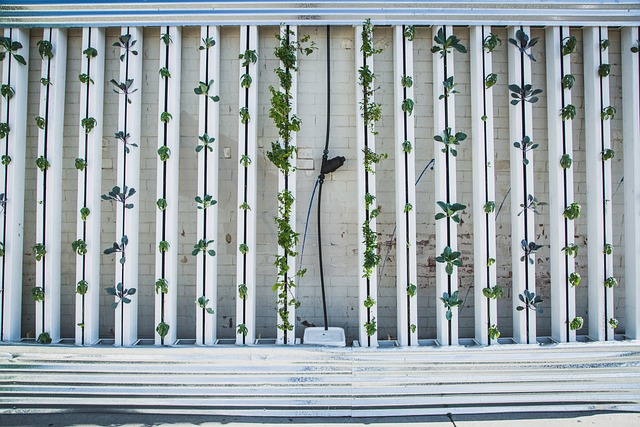Vertical Farming Revolutionizing Agriculture
Introduction
In a world grappling with environmental challenges and a growing population, the traditional methods of agriculture are proving to be unsustainable. This has led to the emergence of innovative solutions like vertical farming, which holds the promise of revolutionizing the way we grow food. In this blog post, we’ll delve into the concept of such a farming, its benefits, challenges, and its potential to transform the future of agriculture.
Understanding Vertical Farming
Vertical farming is a method of growing crops in vertically stacked layers, often in controlled environments like skyscrapers, warehouses, or shipping containers. This approach utilizes hydroponic or aeroponic systems, where plants are grown without soil, receiving nutrients through water solutions.
Benefits of Vertical Farming
- Maximized Space Utilization: Vertical farming allows for the efficient use of space, making it possible to grow crops in urban areas where land is scarce. This can help reduce the distance food travels from farm to table, cutting down on carbon emissions associated with transportation.
- Year-Round Production: By controlling environmental factors such as light, temperature, and humidity, vertical farms can produce crops year-round, independent of seasonal changes. This ensures a consistent food supply and reduces dependence on weather conditions.
- Water Conservation: A farming method so efficient uses up to 90% less water than traditional farming methods, as water is recycled within the system. This is particularly crucial in regions facing water scarcity or droughts.
- Reduced Pesticide Use: In a controlled environment, pests and diseases can be managed without the need for harmful chemical pesticides, leading to cleaner and safer food production.
- Increased Crop Yield: Through optimization of growing conditions, vertical farms can achieve higher crop yields compared to traditional farming methods. This means more food can be produced from the same amount of space.
Challenges and Limitations
Despite its numerous benefits, vertical farming also faces several challenges:
- High Initial Investment: Setting up a vertical farm requires significant upfront investment in infrastructure, lighting, and technology. This can be a barrier for small-scale farmers or developing countries with limited resources.
- Energy Consumption: The artificial lighting and climate control systems used in vertical farms consume a considerable amount of energy. Finding sustainable energy sources and improving energy efficiency is essential to mitigate the environmental impact.
- Technological Complexity: This method relies heavily on technology, including sensors, automation, and data analytics. Managing these systems requires specialized knowledge and skills, which may not be readily available to all farmers.
- Limited Crop Variety: While many leafy greens and herbs thrive in such a farming systems, certain crops such as grains and root vegetables are more challenging to grow vertically. Innovations in crop selection and cultivation techniques are needed to expand the range of crops suitable for vertical farming.
- Market Viability: The economic viability of vertical farming depends on factors such as crop prices, consumer demand for locally grown produce, and competition from traditional farming methods. Ensuring a competitive advantage in the market is crucial for the long-term success of vertical farms.
Applications of Vertical Farming
Vertical farming has diverse applications beyond traditional agriculture:
- Urban Agriculture: Vertical farms can be integrated into urban landscapes, providing fresh produce to local communities and reducing the carbon footprint associated with food transportation.
- Food Security: In regions prone to food shortages or natural disasters, a farming method like this offers a sustainable solution for enhancing food security and resilience.
- Space Exploration: Vertical farming has been proposed as a method of food production for long-duration space missions, where access to fresh food is limited.
- Educational Purposes: Vertical farms can serve as educational tools for teaching students about sustainable agriculture, technology, and environmental stewardship.
Future Outlook
As technology advances and awareness of environmental issues grows, the future of vertical farming looks promising. Continued research and development efforts are needed to overcome existing challenges and make this type of farming more accessible and sustainable. Collaboration between governments, researchers, industry stakeholders, and farmers will be crucial in realizing the full potential of a farming method like this and addressing global food security challenges.


Any comments?